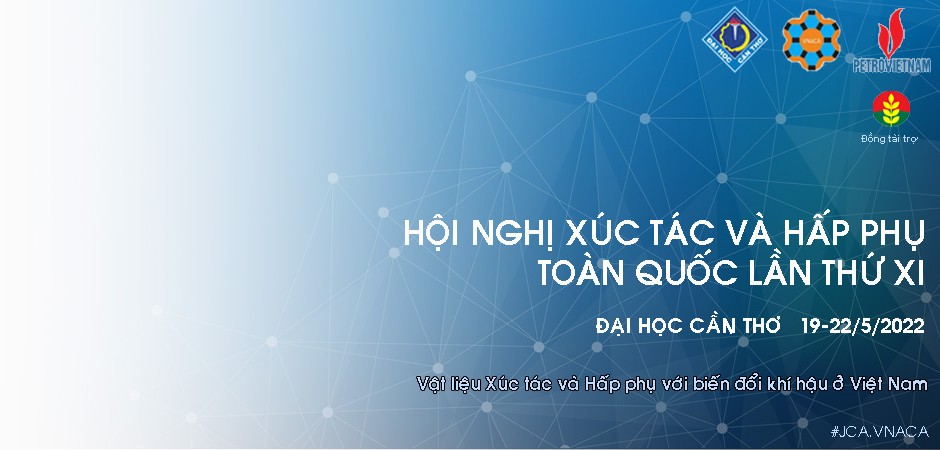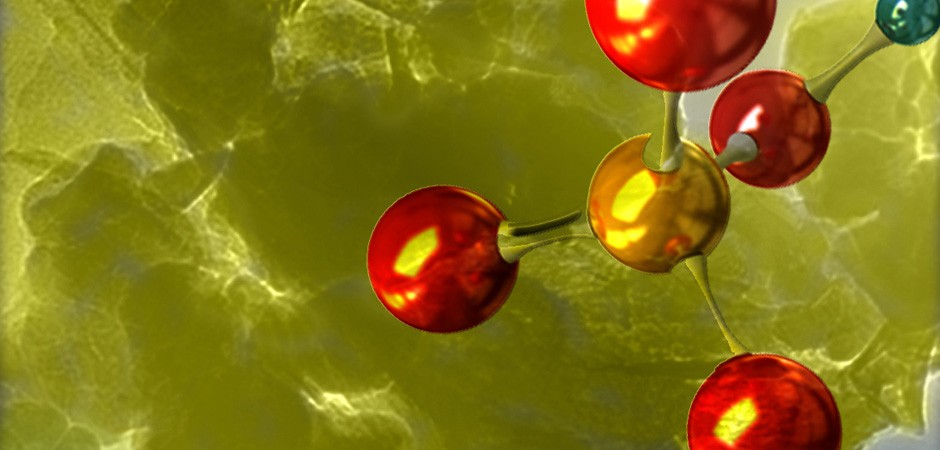- Details
- Published on 06 August 2020
Tổng hợp và tính chất xúc tác quang của composite từ tính Fe3O4–ZnO
Synthesis and photocatalytic activity of magnetic Fe3O4–ZnO composite
Trần Thị Phương Hồng1, Nguyễn Thị Hồng Nhung1, Nguyễn Văn Kim1, Nguyễn Thị Việt Nga1, Võ Viễn1,2 This email address is being protected from spambots. You need JavaScript enabled to view it.
ABSTRACT
Magnetic Fe3O4-ZnO composite was synthesized by combining green chemistry method and hydrothermally technique, in which ZnO was hydrothermally grown in the presence of Fe3O4 formerly prepared using green tea extract as a reducing agent and Fe(NO3)3. For comparison, Fe3O4 and ZnO were prepared. The as-prepared samples were characterized by X-ray diffraction, infrared spectroscopy, scanning electron microscopy, energy-dispersive X-ray spectroscopy, UV-visible diffuse reflectance spectroscopy. The results show that the Fe3O4-ZnO composite contains two components ZnO and Fe3O4, and can absorb more visible light than ZnO. The photocatalytic activity of Fe3O4-ZnO composite was assessed by degradation of Rhodamine B (RhB) under visible light, shows that the composite exhibits the higher activity compared to the single component, ZnO and Fe3O4. This result can be believed enhancement of electron transfer on the surface of photocatalyst via Fe(II)-Fe(III) pair of Fe3O4. A mechanism for photocatalytic degradation of RhB on the composite was proposed. Using the magnetic property of composite for recovery of photocatalyst in reaction mixtures was demonstrated.
- Details
- Published on 06 August 2020
Tổng hợp vật liệu composite TiO2-V2O5 làm xúc tác cho quá trình quang phân hủy xanh metylen dưới ánh sáng khả kiến
Synthesis of TiO2-V2O5 composites for photocatalytic degradation of methylene blue under visible light irradiation
Lê Thị Thanh ThúyThis email address is being protected from spambots. You need JavaScript enabled to view it., Nguyễn Anh Thoáng, Lê Si
Khoa Hóa, Trường Đại học Quy Nhơn, 170 An Dương Vương, Quy Nhơn, Bình Định
ABSTRACT
The nanocomposites photocatalyst of TiO2-V2O5 was prepared by heating method at various temperatures as 400 °C; 425 °C; 450 °C; 500 °C; 550 °C in an hour. The V2O5 doped TiO2 with variation of vanadium mass percentage (4,9% ; 7,3%; 9,7%; 12,2% and 14,6%). The experimental results indicated that the annealing temperature and vanadium mass percentage were important factors for the morphology of samples which influenced the number of efficient TiO2-V2O5 nano-heterostructures. The phase structures of TiO2-V2O5 catalysts with different loading rates were characterized by Scanning electron microscope (SEM), X-Ray diffraction (XRD) and Fourier transform infrared (FT-IR) spectra, diffuse reflection spectroscopy UV-Vis, Transmission Electron Microscopy (TEM), Energy-dispersive X-ray spectroscopy (EDX) and Nitrogen isothermal adsorption (Brunauer-Emmett-Teller-BET). The combination of vanadium oxide with TiO2 could help to decrease the recombination rate of excited electrons/holes. The photocatalytic activity was evaluated by degradation of methylene blue (20 mg/l) in solution with the yield more than 90% after 2 hours under visible light irradiation.
- Details
- Published on 06 August 2020
Nghiên cứu điều chế sol TiO2 từ tiền chất TiCl4 ứng dụng làm xúc tác
Study on preparation of TiO2 Sol using TiCl4 as a Precursor for catalytic applications
Phạm Minh Tứ This email address is being protected from spambots. You need JavaScript enabled to view it. , Đỗ Mạnh Hùng, Âu Thị Hằng, Nguyễn Bích Ngọc, Vũ Thị Thu Hà
Phòng Thí nghiệm Trọng điểm Công nghệ lọc, Hóa dầu, 2 Phạm Ngũ Lão, Hoàn Kiếm, Hà Nội
ABSTRACT
A titanium dioxide sol with nano particle size distribution was synthesized using TiCl4 as a precursor. The sol was prepared by a process where HCl was added to a gel of hydrated titanium oxide to dissolve it. The resulting aqueous titanic acid solution was heated to form titanium dioxide sol. The effects of preparation parameters, viz., concentration of TiO2, pH value of the Ti(OH)4 gel, temperature and time were investigated. The materials were characterized by transmission electron microscopy and zeta sizer. The results showed that the TiO2 particles were rhombus is about 12 nm, and were in anatase structure. The best preparation condition was optimized with the pH value of Ti(OH)4 gel at 8, TiO2 concentration of 0,7%, and heating at 97°C for 30 h.
- Details
- Published on 06 August 2020
Hoạt tính quang xúc tác của ZnO được cải thiện bởi biến tính CuO
Improved photocatalytic activity of ZnO by modification with CuO
Nguyễn Văn Kim1This email address is being protected from spambots. You need JavaScript enabled to view it. , Nguyễn Thị Việt Nga1, Trần Thị Thanh Cẩm1, Phạm Thị Trinh1, Nguyễn Thị Lan1, Nguyễn Văn Nghĩa2, Trần Thị Thu Phương1, Võ Viễn1,3
ABSTRACT
ZnO was modified by CuO via a facile method, in which ZnO was grown on available CuO using microwave reaction system. The obtained composite, denoted as ZnO/CuO, was characterized by X-Ray Diffraction, scanning electron microscopy, Transmission Electron Microscopy, Energy-dispersive X-ray, infrared spectra and Ultraviolet–Visible Diffuse Reflectance Spectroscopy. The characterizations showed that ZnO/CuO composite possesses a bandgap of around 3.37 eV, and consists of ZnO and CuO. The photocatalytic activity of the CuO, ZnO and ZnO/CuO was assessed by degradation of methylene blue under visible light. Among them, ZnO/CuO displayed the best photocatalytic activity. The enhancement in photocatalytic activity for the ZnO/CuO was observed, which can be attributed to the presence of CuO in the materials.
- Details
- Published on 06 August 2020
Study the effects of reaction parameter on degradation of janus green B by using nano zinc oxide loaded on activated carbon
Pham Quang Minh1, Nguyen Thi Van2, Vu Anh Tuan2 This email address is being protected from spambots. You need JavaScript enabled to view it.
1 Physical and Chemical Department, National Institute for Control of Vaccine and Biologicals, Vietnam
2 School of Chemical Engineering, Hanoi University of Science and Technology, Hanoi, Vietnam
ABSTRACT
In this study, zinc oxide nano particles loaded on activated carbon (ZnO/AC) has been successfully prepared for degradation of Janus Green B (JGB) under low UV light intensity. The activated carbon (AC) was synthesized from rice husk by two steps calcination at 800 ℃, ZnO/AC was synthesized by hydrothermal method with the assistant of HMTA. As-prepared samples were characterized by XRD, FE-SEM, N2 adsorption/desorption. The effects of operational parameters on the photo-degradation reaction progress, including catalyst dosage, initial dye concentration, initial pH value and the addition of inorganic anions were investigated in detail. In addition, the photodegradation rate of JGB on composite was evaluated by using the pseudo-first-order model.















